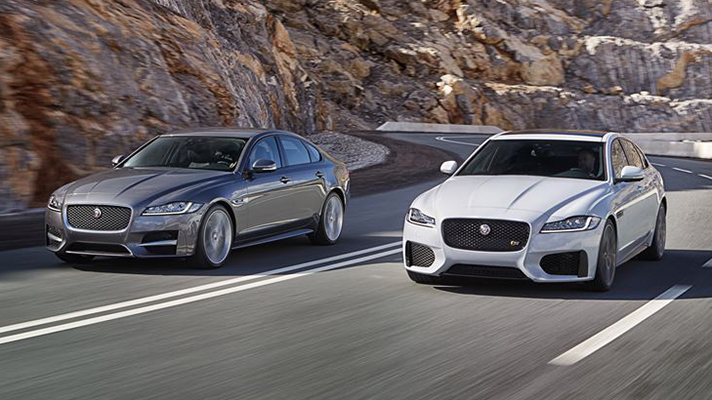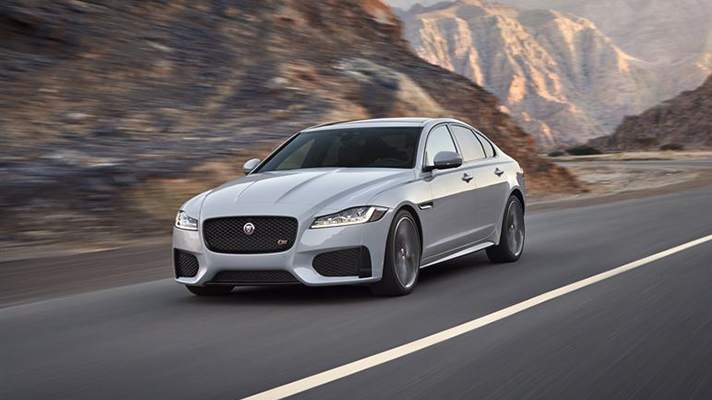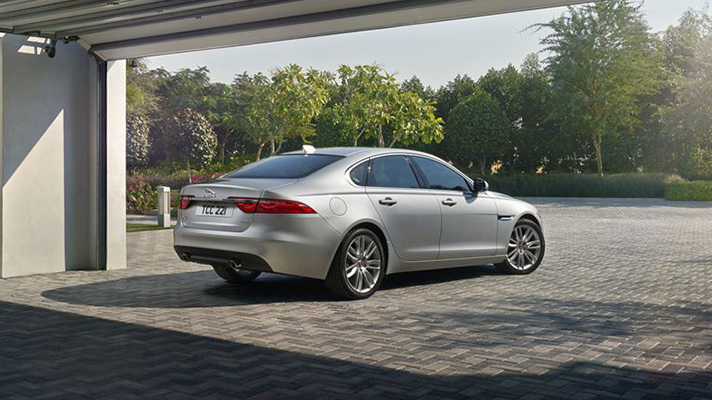
New Jaguar XF: all you need to know
Last week, Jaguar teased its BMW 5-Series fighter by putting it on a high wire over the River Thames. Naturally. Well, you'll be pleased to know it's made it to solid ground; the ground of the New York motor show. Welcome, Jaguar XF.
It's the second generation of Jaguar's business saloon, going up against the likes of the Mercedes-Benz E-Class, BMW 5-Series and Audi A6. Shark infested waters if ever there were any, though Jaguar is confident the new XF has got the minerals to compete.
Starting from the base alone, for example, reveals how many minerals. Using an aluminium intensive architecture - and moving away from an all-steel monocoque - the new XF weighs in at up to 190kg less than the old car, while stiffness has been increased by 28 per cent.
The one-piece bodyside pressings (weighing less than 6kg each) are aluminium, as is the bonnet, complete with that power bulge.
It's also got a longer wheelbase, shorter front overhang, there's more leg- and knee- room in the back, and a near 50:50 weight distribution for pointy handling. In fact, the front double wishbone setup is modelled closely on the F-Type, there are lighter springs, and an integral link rear setup.
It's rear-wheel drive, of course, and comes equipped with an electric steering rack, torque vectoring, passive dampers as standard and adaptive ones as an option. Each XF is available with the ZF eight-speed auto, though the 2.0-litre diesel variants get the option of a new six-speed manual, too. A first for the XF.
Ah yes, the engines. In the UK we'll get three engines: that 2.0-litre diesel ‘Ingenium' engine in 161bhp and 178bhp guises (with the availability of a manual gearbox), a 3.0-litre diesel with a nicer 295bhp on tap, and an even nicer 3.0-litre, supercharged V6 - lifted from the F-Type - producing 375bhp and 332lb ft of torque. That last one is badged the XF S, and is the one you should immediately go for.
Why? Because it'll go from 0-62mph in 5.4 seconds (0-60mph in 5.1secs), and top out at a limited 155mph. The 3.0-litre diesel will do the benchmark 0-62mph sprint in 6.2secs, while that entry-level 2.0-litre records a time of 8.7secs (with either a manual or automatic ‘box).
If economy is your bag, that entry-level diesel promises 104g/km of CO2 and 71.7mpg. Not bad for a big posh saloon.
Inside, there's a colour frickin' laser head up display, a brand new 10.2in touchscreen with JLR's fancy ‘Dual View' tech (allowing passengers to watch telly while you view the nav) and a fully configurable 12.3in TFT instrument cluster.
Top Gear
Newsletter
Thank you for subscribing to our newsletter. Look out for your regular round-up of news, reviews and offers in your inbox.
Get all the latest news, reviews and exclusives, direct to your inbox.
There's also a 17-speaker, 825W Meridian sound system, quad-core processing power, traffic sign recognition, and of course, the familiar rotary gear selector for the auto and rotating air vents. There is suede headliner, much leather and soft-close doors.
It's a cool looking thing, no? Prices for the 2.0-litre diesel start at £32,300, rising to £49,950 for the 3.0-litre diesel and 3.0-litre supercharged petrol ‘S' versions. And you can bet all you own that a performance R version will follow in due course...
Trending this week
- Car Review
BMW 1 Series
- Top Gear's Top 9
Nine dreadful bits of 'homeware' made by carmakers










